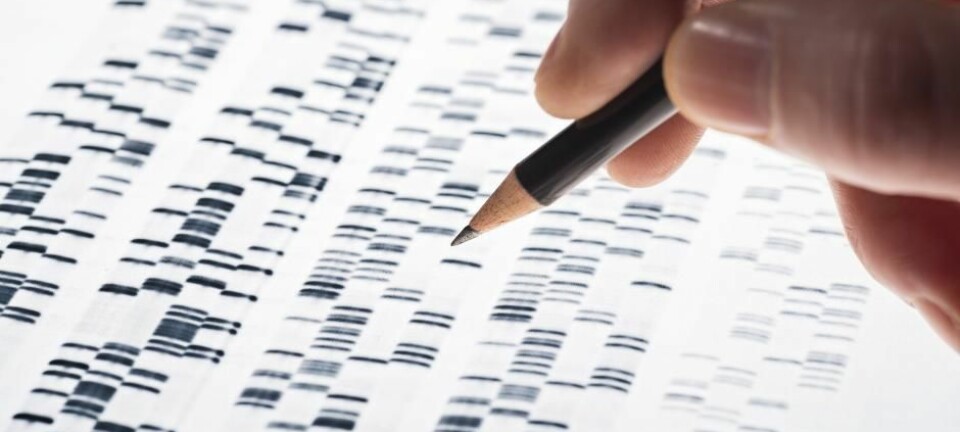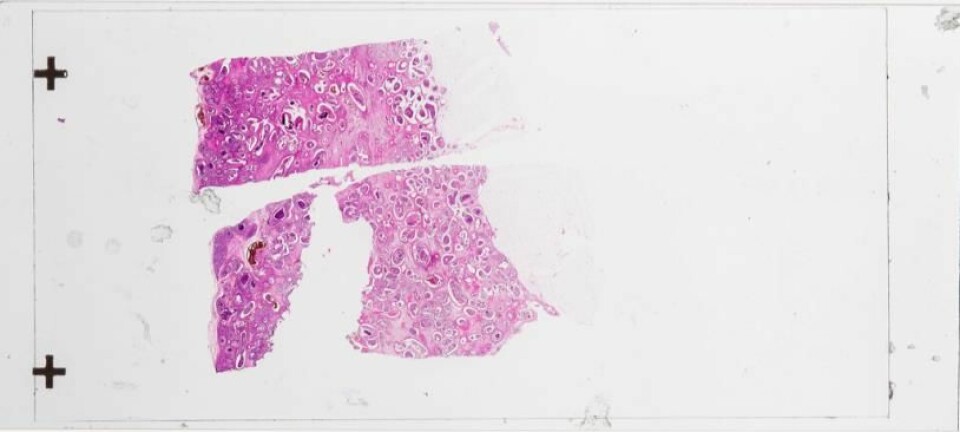
Scientists discover mechanisms behind aggressive forms of cancer
Scientists have discovered the mechanisms that can explain how cancer genes are switched on and off.
Scientists have discovered a new mechanism that can explain how cancer genes are switched on and off.
The mechanism involves “super-enhancers,” which are a part of our DNA that can activate cancer genes and strengthen the activity of the gene many hundred times over. And it is often associated with an aggressive type of cancer.
The results are published in the journal Nature Genetics.
“The interesting thing here is that this mechanism appears to influence a wide array of cancers,” says study co-author Joachim Weischenfeldt from the Biotech Research and Innovation Centre (BRIC) at the University of Copenhagen.
The scientists studied more than 20 types of cancer and found that the mechanism was the same for most types of cancer, such as lung cancer, stomach cancer, and brain cancer.
“This is new [knowledge] and will undoubtedly make it easier to develop new effective treatments in the foreseeable future,” says Weischenfeldt.
Read More: New treatment increases life expectancy of cervical cancer patients
Cancer hijacks super-enhancers
The scientists discovered new cancer genes among well-known genes, such as IGF2. Scientists previously thought that IGF2 was activated by copying itself many times over, strengthening the effect.
This hypothesis has now been updated.
Cancer is established when the DNA structure is destroyed and super-enhancers come close to the cancer genes.
“If you have two rods made of Lego bricks and both of them are knocked over, they can then be recombined in a totally new way,” says Weischenfeldt.
Super-enhancers, which can make sure that cancers switch on and are expressed to a greater strength, move into the vicinity of the cancer gene on the DNA strand and become mutated or duplicated multiple times.
“Cancer disease hijacks a super-enhancer that may sit on a totally different chromosome than the cancer gene. It puts the super-enhancer in front of the cancer gene that is then activated and strongly up-regulated,” says Weischenfeldt. He calls the new mechanism “enhancer-hijacking.”
Read More: Scientists: we will never find a cure for cancer
Verified by mouse models
The scientists studied data from almost 8,000 patients from the US Cancer Genome Atlas to identify the genes associated with cancer.
“We looked at mutations in the patients DNA and where the chromosomes were broken and the DNA structure changed and reassembled in a different way. We compared that with the number of specific proteins produced by cancer genes that promote cell growth,” says Weischenfeldt.
The scientists discovered a potentially new cancer gene, IRS4, that is especially active in lung cancer, and which they tested in a mouse model.
“We saw that activating the IRS4 gene resulted in increased cell growth, which underlined an important role of this gene in the development of cancer,” says Weischenfeldt.
Read More: Scientists find new mechanism to explain development of cancer
An important discovery
Clinical Professor Kirsten Grønbæk from Rigshospitalet, Denmark, is excited by the new results.
“These results change our whole understanding of how the cancer genome functions and improves the way we target treatments to these changes in the cancer,” says Grønbæk.
“For me, it’s a huge discovery--we see a totally new basic-biological mechanism that is different to what we [had previously thought],” she says.
Professor Claus Lindbjerg Andersen from the Department of Clinical Medicine at Aarhus University, Denmark, agrees.
“I find the results exciting and ground-breaking in the sense that we hadn’t previously shown the extent to which cancer genes are regulated in this way,” he says.
“The strong part of this work is that one of the mechanisms is mapped. Structural changes in the genetic material can move regulatory elements from one gene over to another, so that an otherwise normal gene behaves as a cancer gene,” says Andersen.
Read More: Is immunotherapy really a revolution?
We do not need to know the cancer genes
In recent years, scientists have been increasingly focussed on genetic material on the outside of the gene.
Around 98 per cent of our DNA does not contain genes, but most mutations in cancer cells occur in these areas that also contain elements that can regulate genes.
“Until now we only had poor knowledge of the role they play for diseases like cancer,” says Weischenfeldt.
The new research is essential to our understanding of how these regions that do not contain genetic material, can activate cancer genes.
“In many cancer patients, there’s no known genetic cause. Previously, we thought that mutations found outside of the genes didn’t play a significant role. The new mechanism means that the cancer gene doesn’t necessarily need to mutate or copy itself multiple times to become activated and cause increased cancer growth,” says Weischenfeldt.
-----------------------
Read the Danish story on Videnskab.dk
Translated by: Catherine Jex









